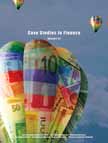The ITC Classic Story




|
|
ICMR HOME | Case Studies Collection
Case Details:
Case Code : FINC005
Case Length : 6 Pages
Period : 1991 - 1996
Pub. Date : 2002
Teaching Note : Available
Organization : ITC Classic, ICICI
Industry : Financial Services
Countries : India
To download The ITC Classic Story case study (Case Code:
FINC005) click on the button below, and select the case from the list of available cases:

Price:
For delivery in electronic format: Rs. 200;
For delivery through courier (within India): Rs. 200 + Rs. 25 for Shipping & Handling Charges
» Finance Case
Studies
» Short Case Studies
» View Detailed Pricing Info
» How To Order This Case
» Business Case Studies
» Case Studies by Area
» Case Studies by Industry
» Case Studies by Company
Please note:
This case study was compiled from published sources, and is intended to be used as a basis for class discussion. It is not intended to illustrate either effective or ineffective handling of a management situation. Nor is it a primary information source.
|
|
<< Previous
Classic: The ITC Fostered Baby
Named after ITC's premium cigarette brand 'Classic,' Classic was incorporated in 1986.
|
Classic was a non-banking finance company (NBFC) predominantly engaged in hire purchase and leasing operations. Besides, the company undertook investment operations on a substantial scale.
The company did very well in the initial years and developed a strong network to mobilize retail deposits. Its fund-based activities such as corporate leasing, bill discounting and equities trading also grew substantially over the years. At a compounded annual growth rate of 78% during 1991-96, Classic's annual turnover increased from Rs 17.3 crore to over Rs 310 crore and net profits from Rs 2.3 crore to Rs 31 crore in the same period.
|
|
By June 1996, the company had a deposit portfolio of Rs 800 crore consisting mainly of retail deposits.
|
|
The capital market boom of the early 1990s was responsible to a large extent for Classic's impressive financials. Around 50% of Classic's assets had to be kept in financing and a further 25% was to be held in liquid funds or cash to handle cash outflows. However, Classic was free to invest the remaining 25% as it deemed fit - which happened to be in the 'boom stocks.' When the markets crashed in 1992, Classic had to face heavy losses. Like most other finance companies, Classic too saw the 1995-96 stock market downturn taking a toll on its performance. A sharp increase in cost of funds, weak capital market conditions and the general liquidity crunch marked the beginning of the company's poor financials... |
Excerpts >>
|
|


